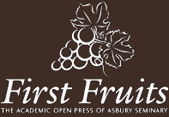Article Title
Major Structural Relationships: A Survey of Origins, Development, Classifications, and Assessment
Abstract
A central feature to Inductive Bible Study (IBS) are Major Structural Relationships (MSRs), despite some variation in the number, identification, descriptions, and organization of them. These relationships are endemic to human communication; hence, their description is vital for accurate and holistic observation of biblical materials. The origin of MSRs is traceable to the 19th century art instruction of John Ruskin. He himself was aware that his insights into composition extended beyond artistic to musical and literary composition. Practitioners of IBS have continued to develop and describe rigorously methodologies surrounding the identification of MSRs, especially at Asbury Theological Seminary. A survey and review of the development of MSRs within the IBS movement reveals that stability of their identification as well as an openness to refine them (even adding to them) has been an asset for practitioners of IBS. The genius of IBS has been its major practitioners’ conceiving MSRs as central in the quest for truth, and especially the truth of God’s Word.
DOI
DOI: 10.7252/Journal.02.2014S.03
Recommended Citation
Long, Fredrick J.
(2014)
"Major Structural Relationships: A Survey of Origins, Development, Classifications, and Assessment,"
The Journal of Inductive Biblical Studies:
Vol. 1:
Iss.
1, p. 22-58.
Available at:
https://place.asburyseminary.edu/jibs/vol1/iss1/3
